A Safety Instrumented System (SIS) is an essential part of industrial process safety, designed to automatically monitor, control, and protect critical processes in various industries, such as oil and gas, petrochemical plants, power generation facilities, and more. The primary objective of an SIS is to prevent accidents or mitigate their impacts by detecting hazardous conditions and initiating automated actions that protect people, equipment, and the environment.
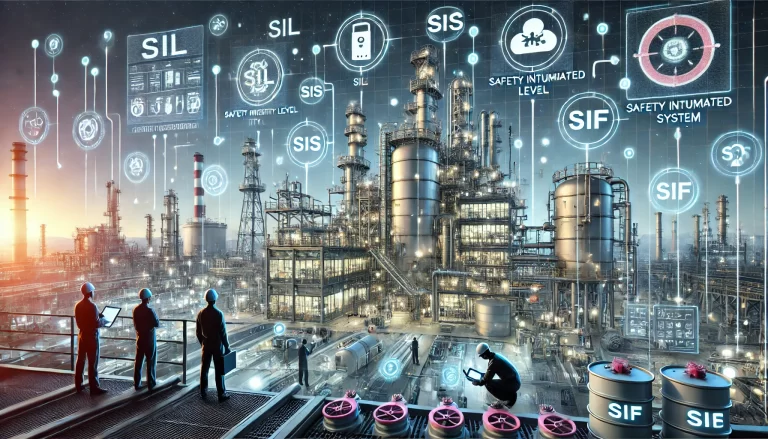
Core Functions of an SIS
Fault Detection and Prevention: The SIS continuously monitors key process parameters (such as pressure, temperature, or flow rate). If any of these parameters deviate from their predefined safe limits, the system detects the anomaly and triggers protective actions. For example, if a pressure valve in a chemical reactor exceeds its safety threshold, the SIS will automatically activate emergency shutdown procedures to prevent potential equipment failure, explosions, or leaks.
Automatic Safety Actions: SIS systems are designed to respond to hazardous conditions without requiring manual intervention. When abnormal situations are detected, the system automatically executes safety measures, such as shutting down equipment, closing valves, or initiating emergency venting to prevent accidents. The ability to respond quickly and automatically is crucial in high-risk environments, where human reaction times may be too slow to prevent catastrophic incidents.
Independence and Redundancy: One of the defining characteristics of an SIS is that it operates independently from the plant’s regular process control systems, such as Distributed Control Systems (DCS). This separation ensures that the SIS remains operational even if the control system fails. Additionally, SIS architectures often incorporate redundancy—multiple layers of sensors, logic solvers, and actuators—to ensure system reliability. If one component fails, redundant systems take over to ensure the SIS remains fully functional.
Safety Integrity Level (SIL): To ensure that an SIS is designed and implemented effectively, it must meet specific safety requirements based on the risks associated with the industrial process. These requirements are defined by the Safety Integrity Level (SIL), a scale ranging from SIL 1 to SIL 4. The higher the SIL rating, the more robust the system must be to handle risks. For instance, SIL 4 systems are typically reserved for processes where failure could result in significant loss of life or major environmental damage. Each level represents different degrees of risk reduction, with SIL 4 offering the highest risk mitigation.
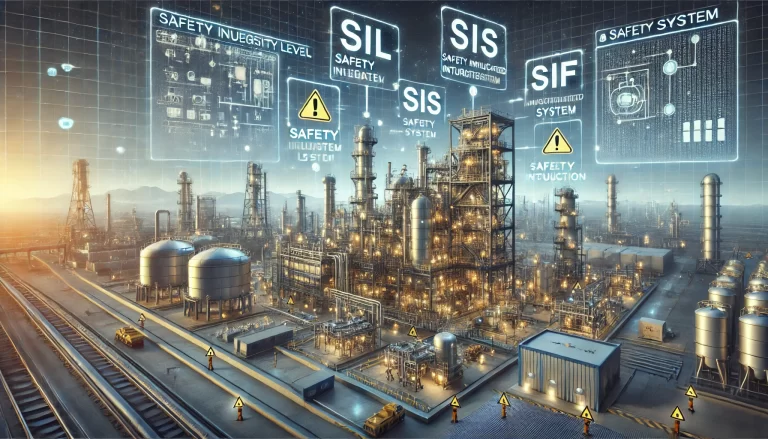
Components of an SIS
An SIS generally consists of three main components, each of which plays a critical role in maintaining process safety:
Sensors: Sensors are used to detect critical process conditions, such as pressure, temperature, or flow rate. These sensors provide real-time data to the system, alerting it to any deviation from normal operations. If an abnormal condition is detected, the sensor relays this information to the next component, the logic solver.
Logic Solver: The logic solver acts as the “brain” of the SIS. It processes input from the sensors and determines whether the process is within safe operating limits. If the logic solver detects that the process is moving toward an unsafe condition, it initiates predefined safety actions. This decision-making unit often runs specialized software and operates on dedicated hardware to ensure reliability and fast response times.
Actuators: Actuators, such as valves or relays, execute the actions determined by the logic solver. These components physically intervene in the process to bring it back to a safe state. For example, an actuator might close a valve to prevent excess pressure from building up in a pipeline or start a pump to redirect flow away from a compromised area.
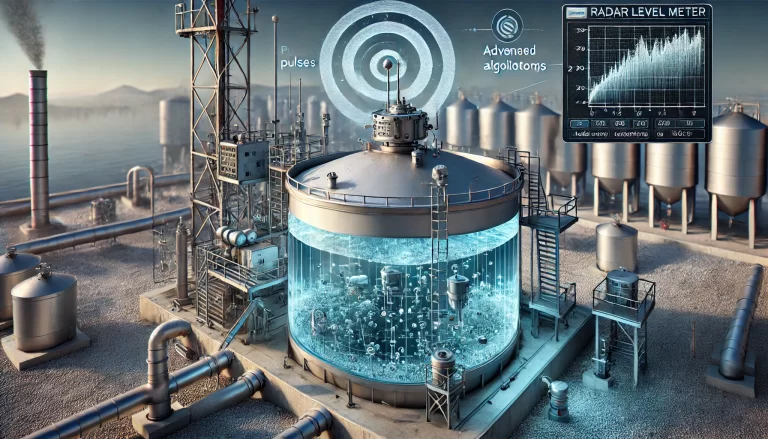
The Importance of SIL and Risk Assessment
To design an effective SIS, an organization must conduct a Risk Assessment to identify the hazards associated with their processes. Based on this assessment, they determine the appropriate SIL rating for each safety function. SIL is critical because it helps to quantify the level of risk reduction required, ensuring that the SIS is appropriately designed to prevent catastrophic failure.
- SIL 1: Low risk reduction. Used for processes with relatively low-risk consequences.
- SIL 2: Moderate risk reduction. Suitable for processes where failure could cause limited safety or environmental issues.
- SIL 3: High risk reduction. Applied in situations where failure could lead to significant safety concerns, such as equipment damage or injuries.
- SIL 4: Very high risk reduction. Reserved for processes where failure could result in severe consequences, including loss of life, large-scale environmental damage, or catastrophic equipment failure.
Each SIL level corresponds to a target probability of failure on demand (PFD), with higher levels requiring more stringent safety measures, including increased redundancy and more frequent testing.
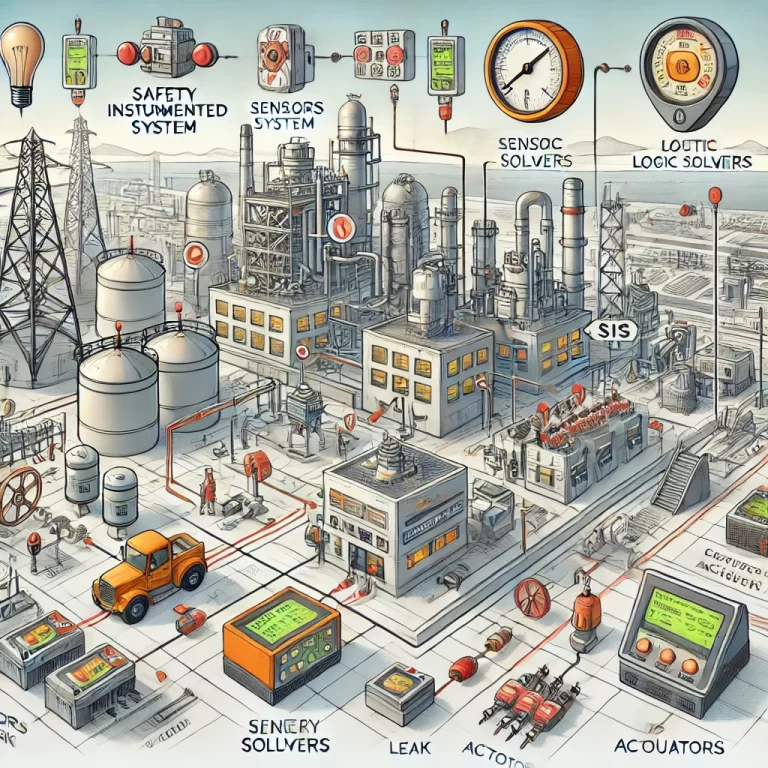
Applications of SIS in Various Industries
SIS systems are widely used in industries that deal with hazardous materials, extreme operating conditions, or high-energy processes. Some common applications include:
Pressure Overload Protection: In chemical plants, overpressure in a reactor or pipeline can lead to explosions or toxic gas releases. SIS systems detect when pressure exceeds safe limits and automatically open relief valves or shut down equipment to prevent an incident.
High-Temperature Shutdown: In oil refineries, excessive temperatures in certain processes can lead to equipment damage or unsafe chemical reactions. The SIS will monitor temperature levels and initiate shutdown procedures if temperatures exceed predefined safety thresholds.
Emergency Shutdown (ESD): In oil and gas processing facilities, SIS is responsible for managing emergency shutdown sequences. If a gas leak or fire is detected, the system can automatically close safety valves, shut off pumps, and activate fire suppression systems to contain the hazard and minimize risk.
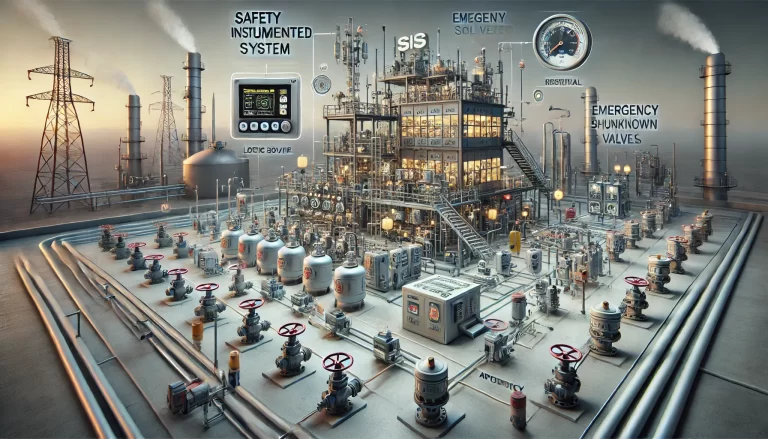
SIS Design Considerations
To build a reliable SIS, several design factors need to be considered:
Redundancy: Redundancy is essential for ensuring that an SIS remains operational even if a component fails. This can involve installing multiple sensors to monitor the same process variable or using dual logic solvers to provide backup decision-making capabilities.
Fail-Safe Mechanisms: SIS designs should ensure that, in the event of a failure, the system defaults to a safe state. For example, valves should be designed to close automatically when de-energized (fail-closed), preventing hazardous material from flowing in uncontrolled conditions.
Periodic Testing and Maintenance: Regular testing of SIS components is crucial to maintaining their reliability over time. Functional safety standards, such as IEC 61511, require that SIS systems undergo periodic testing to verify that they perform as expected when needed. This helps to identify and correct potential issues before they lead to system failure.
Compliance with Standards: SIS systems must be designed and operated in compliance with international safety standards, such as IEC 61508 and IEC 61511, which outline the functional safety requirements for safety-critical systems.
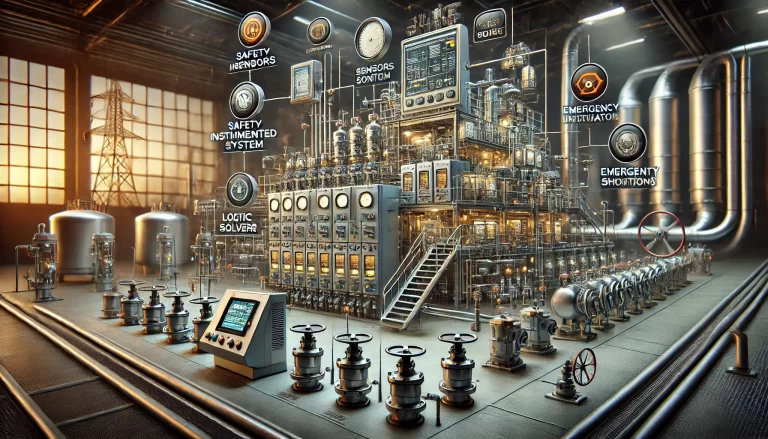
Conclusion
A Safety Instrumented System (SIS) is a vital safeguard in industrial environments, designed to monitor processes and automatically intervene to prevent hazardous situations from escalating into accidents. Through a combination of sensors, logic solvers, and actuators, SIS ensures that industrial operations remain within safe parameters, protecting both human life and the environment. By adhering to rigorous safety standards and ensuring proper design, maintenance, and testing, SIS systems play a critical role in minimizing the risk of catastrophic incidents in high-risk industries.
